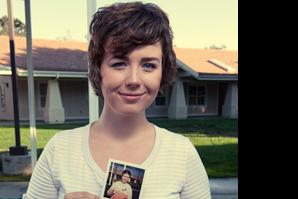A teenage boy walks through dangerous gang territory to reach the train that will take him from his low-income neighborhood to a private high school in Sacramento where almost no one knows his story.
“In seventh grade, I was on a bad path,” he says. “I was doing bad things, participating in gangs and drugs, talking bad, making bad grades. I was out on the streets at night when I should have been sleeping. I was not seeing my family. I was getting caught by the police every week; they would handcuff me and ask me questions. I needed to step up and change for good.”
The next year, in eighth grade, school administrators assigned him a mentor, a man who believed the kid was not a lost cause. He began attending church and walked away from the gang that once defined him. He hit the books and raised his grades from straight Fs to straight As. He won every academic award offered at his school.
The summer before his freshman year, his teachers and principal recommended him for Educational and Academic Student Empowerment, a confidential program that operates through the Sacramento Valley Region Care Coalition for promising students from low-income families EASE has placed 12 teens in private middle and high schools since its launch two years ago. It pays for the students’ tuition, books and uniforms until they graduate — as long as they keep up their grades and tell no one that they’re a part of the fraternity.
EASE has placed 12 teens in private middle and high schools since its launch two years ago.
“It’s a completely confidential and anonymous program,” says director Jason Harper. “We do that for the purpose of maintaining the dignity of the family and the dignity of the child. We want them to be just one of the students.”The 12 are thriving, Harper says. One is carrying a 4.2 grade-point average, and two are 4.0 students. The former gang member is now a sophomore and working hard to bring his 3.6 GPA up to the 4.0 he achieved his freshman year. He dreams of college.
“Being in this school made me a better person,” he says. “It’s separated me from my old friends, who were bad, separated me from my neighborhood. I want to be someone better. I’m really glad I changed. We should never give up on ourselves.”
The school’s dean of students, who can’t be named in keeping with the EASE rules, says of the 16-year-old, “He still lives in that neighborhood, and he makes the choice every day to come here. EASE kids still have to go home and live the reality of life in their neighborhood, but they’re choosing to go to school and be better.”
Harper hopes to enroll a few more promising young people from poor families in private schools next year. “We have the opportunity to change the trajectory of a child’s education,” he says.
The organization depends on donations and grants to survive and grow, he says. Its budget for the 2011-2012 school year is just $60,000.
Recommended For You

Stores of Opportunity
Compassionate Planet Thrift offers job training to those in need
In her teens, Velvet Edwards dropped out of Lincoln High School to care for her mother, who had hepatitis and scoliosis. By 22, she had few life skills and no high school diploma as she watched her mother slowly disappear. “Toward the end, her organs just started to shut down, and she faded away,” says Edwards, now 28.

Child Nomad
Finding success after foster care
Chloe Walker doesn’t remember the first time she moved or how many times she had to pack her belongings in flimsy trash bags. But she remembers getting her first suitcase at age 18, when she became too old for the foster system.



